
Rediscovering Japan

Rediscovering Japan
Travel (Goto Islands Part 2 (Fukue Island))

by tomizuta
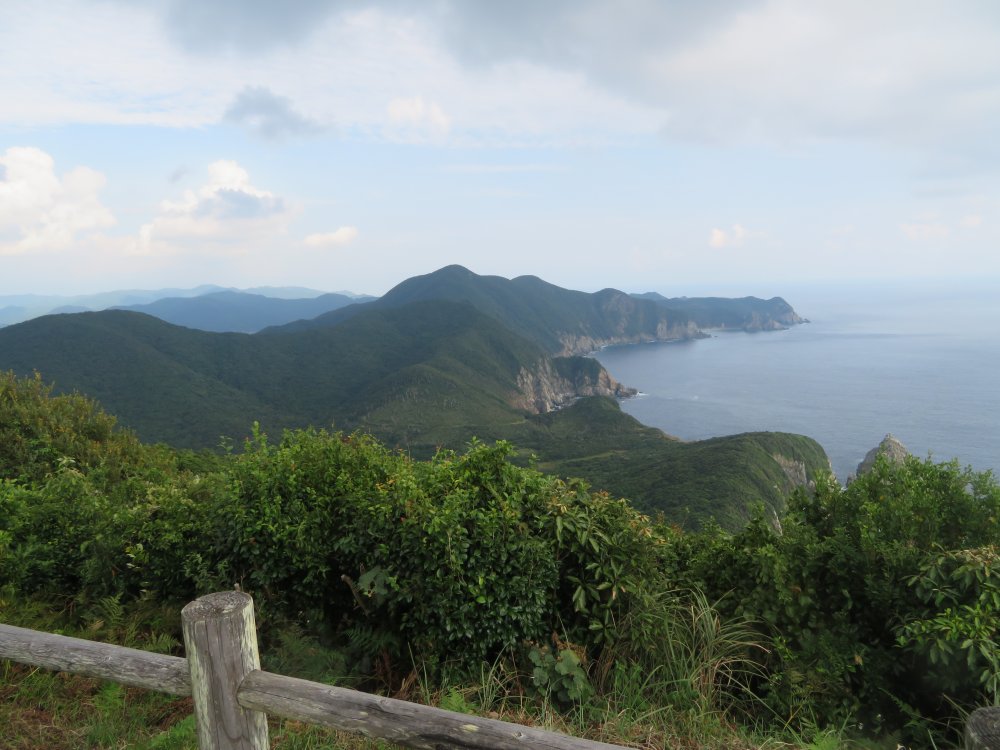
View toward the Eastern China Sea from the observatory deck of the Osezaki Lighthouse. The cliffs may have been the last view of Japan for the members of the envoys traveling to Japan in the 7th to 10th century.
On the third day, after leaving the hotel, we visited the Goto Family Garden and Kakureden Residence. The Goto Islands were unified under the Uku Clan in the 14th century, with their base on Uku Island. The clan later moved their headquarters to Fukue Island. By the late 16th century, the Uku Clan pledged allegiance to Toyotomi Hideyoshi, participated in the construction of Nagoya Castle, and joined the invasions of Korea, eventually changing their name to the Goto Family. During the Edo period, the region became known as Fukue Domain (Goto Domain). Their original base, Egawa Castle, was destroyed by fire in 1619. Despite numerous petitions, the Tokugawa shogunate's policy of prohibiting new castle constructions meant they weren't allowed to rebuild until 1849, towards the end of the Edo period. The shogunate finally permitted the construction to monitor foreign ships and bolster coastal defenses. Ishida Castle was completed in 1863, making it Japan's newest castle, but it was short-lived, being abandoned just nine years later due to the Meiji government's castle abolition policy. Only the Kakureden Residence and the daimyo garden, built in 1861 as a retirement residence for the 30th head of the Goto family, Lord Morinari, remain as a testament to that era.
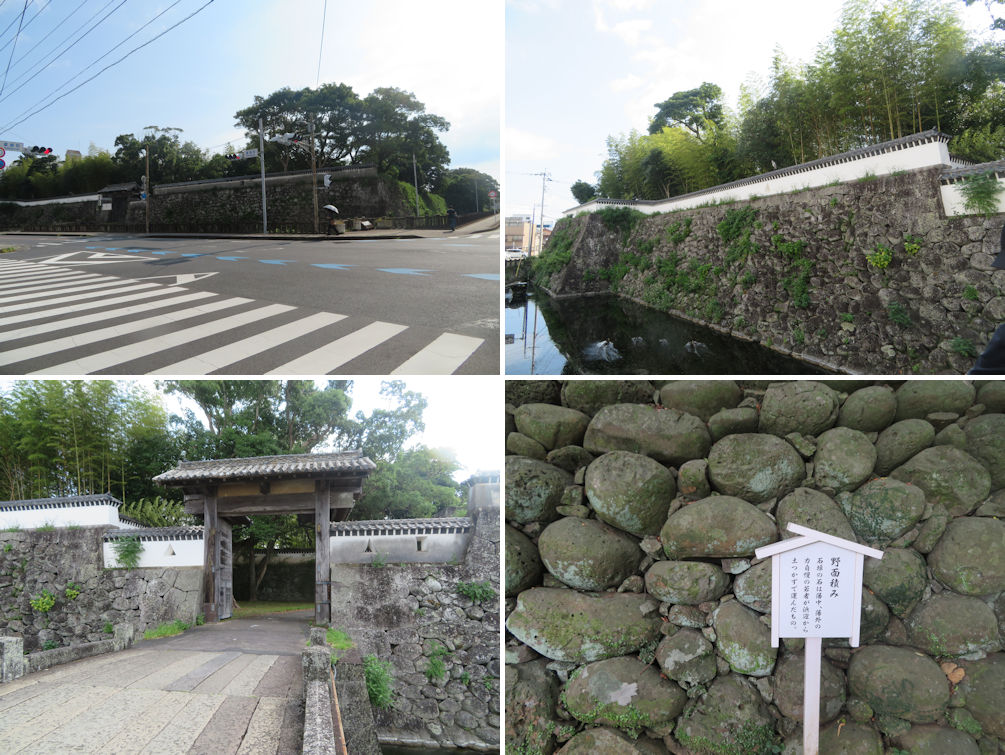
Upper row: The castle area (left) and the castle walls (right). Lower row: The castle entrance gate (left) .The sign tells that the casle stone walls were built "nozurazumi", a method of building castle stone walls by piling up natural stones or split stones with minimal processing (right).
The first thing the guide at the residence handed out to the group were
fans. As we toured the garden, we quickly noticed the extraordinary number
of mosquitoes. The fans were meant to ward them off. Travelers visiting
this residence in the summer should be prepared. After the garden tour,
we were shown around the residence, which features intriguing elements
like emergency escape tunnels, whether they were ever used or not.
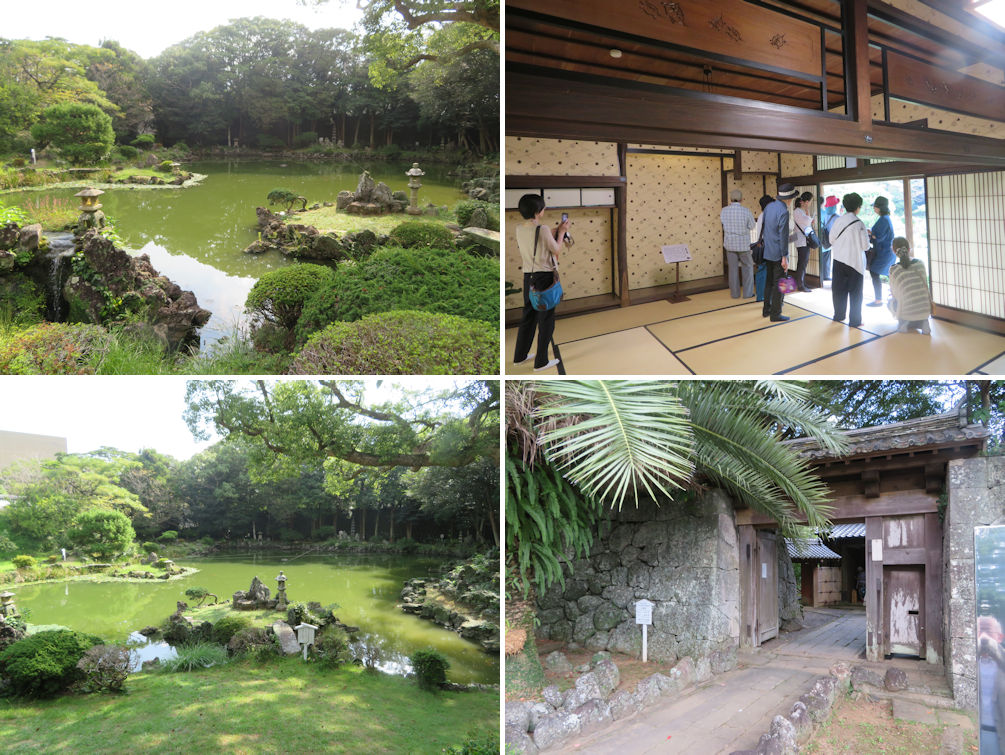
(Upper left) The garden is a typical promenade garden, where you enjoy walking around the pond in the middle (usually taking the form of the kanji character for "心 (heart). Upper right) Interior of the residence. It has quite a few large tatami rooms. (Lower left) View of the garden from the residence, providing the best view. (Lower right) Entrance to the residence.
The Goto Islands boast many beautiful beaches. Leaving Kakureden Residence, we headed to our next destination, Dozaki Church, and took a stroll along Takahama Beach on the way. Since it was low tide, we could walk several hundred meters across the sandy shore to the water's edge. The sea was pristine, and I had never seen such an expansive stretch of beach.
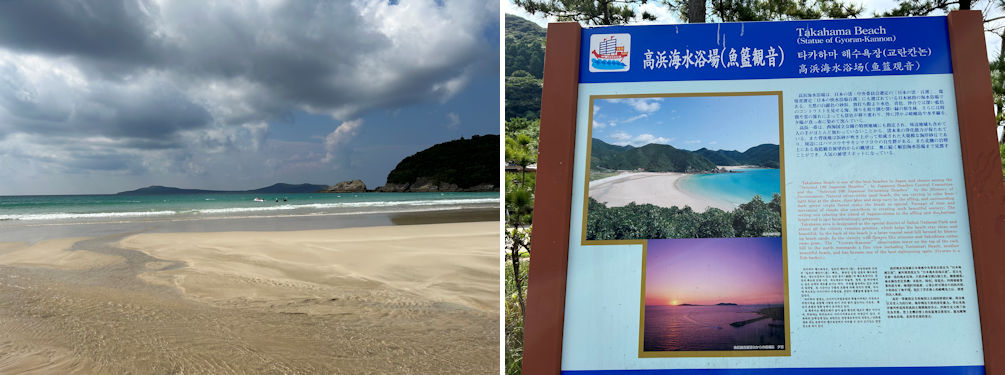
The Goto Islands boast many beautiful beaches. We visited Takahama Beach, nominated in the top 100 beaches of Japan.
Next, we visited the brick-built Dozaki Church, completed in May 1908. Dozaki was the first location in the Goto Islands to build a wooden church after the ban on Christianity was lifted, and the current church is the second on the site. Nowadays, it serves as a museum open to the public, showcasing the history and artifacts of the persecution, including many exhibits from the Edo period, which were deeply moving. On the grounds, there are statues of Fathers Frénot and Marmand, who evangelized during the construction of the first church, and a shrine housing two stone statues resembling Maria Kannon.
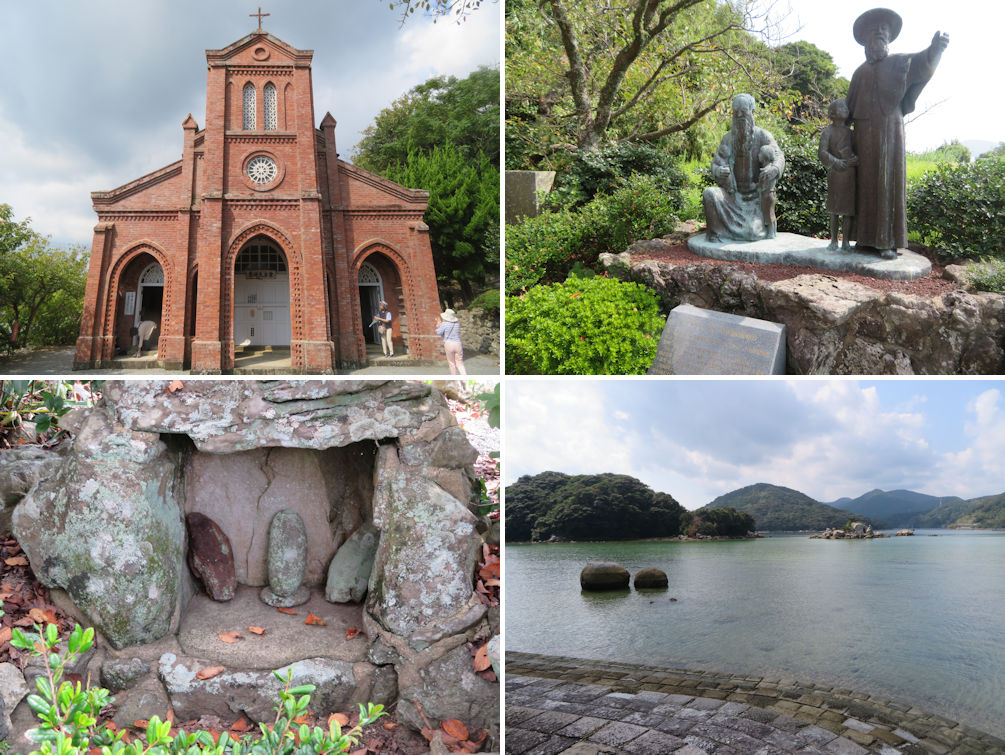
The brick-built Dozaki Church, completed in May 1908 (upper left) The statues of Fathers Frénot and Marmand in the church gardens (upper right) The shrine housing two stone statues resembling Maria Kannon also in the church gardens (lower right).
Before flying back to Haneda from Fukue Airport via a propeller plane to Fukuoka Airport, we made one last stop at the Osezaki Lighthouse, towering on a cliff and famous as a filming location for movies and TV dramas. We had to settle for a view from the observation deck only, as an actual round trip visit to the lighthouse itself would take one hour from the observatory. Despite this, the view from the deck alone was breathtaking, with the rugged coastline offering a stunning scene. Around the observation deck, numerous camellia trees grew naturally, and even though they were still in bud, it reinforced the island's reputation as the Island of Camellias.
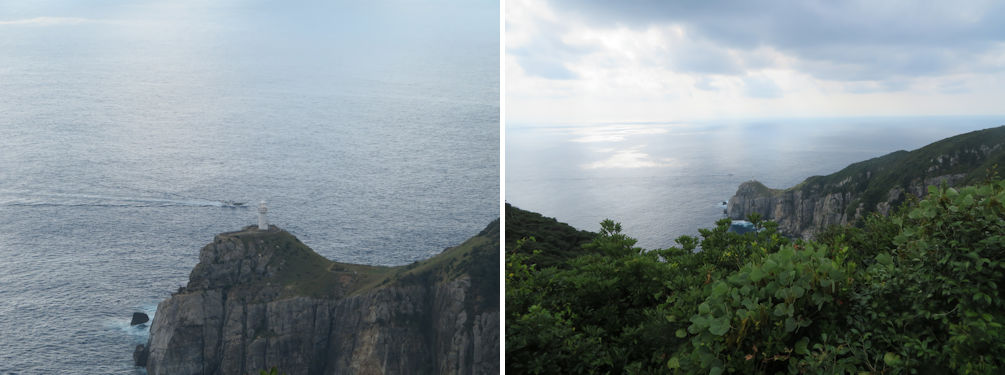
The Osezaki Lighthouse as seen from the observation deck (left). Looking to the south (right).
Reflecting on the three-day, two-night tour: (1) It took nearly a full day to reach the Goto Islands from Tokyo by plane and ferry. I experienced a change in ferry destination due to rough seas, highlighting the necessity of having a flexible plan. For a first visit involving multiple islands, I felt that a personal trip with flights and rental cars wouldn't be ideal. (2) The tour was essentially a two-full-day itinerary, designed with efficient routes, but packed with Goto Islands' landmarks and specialties, resulting in a lack of thematic coherence. (In my personal travel guiding, I strive to set clear themes like Japanese religion, the world of samurais, Japanese architecture, or gardens, believing it helps travelers better retain the experience.) (3) Despite these points, it was an enriching journey that left me enchanted with the Goto Islands and eager to visit again someday.